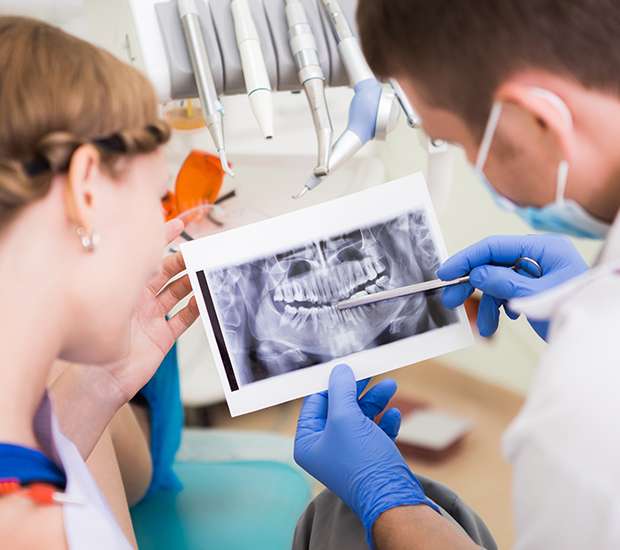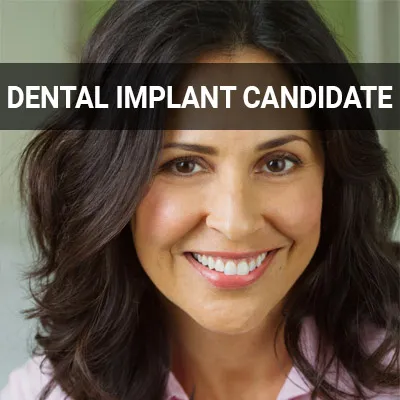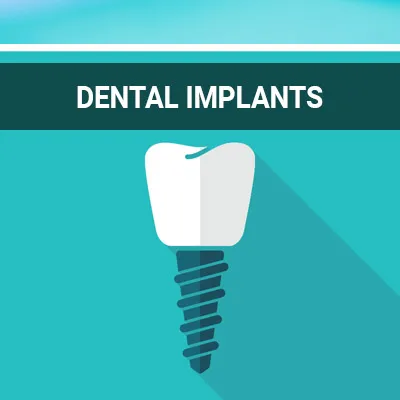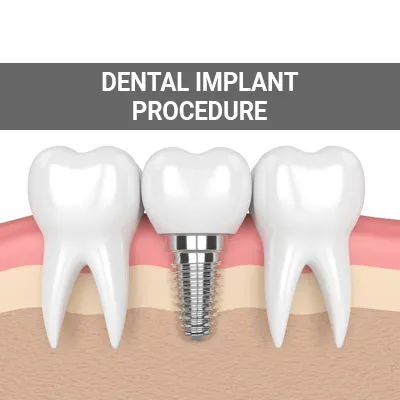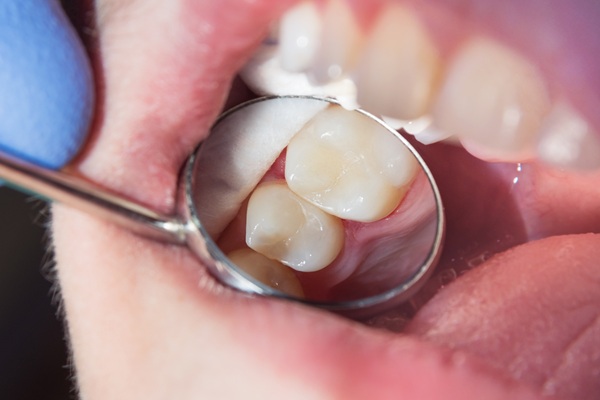Will I Need a Bone Graft for Dental Implants Ladera Ranch, CA
A bone graft, or bone augmentation, for dental implants ensures a strong and secure hold for the artificial tooth before placing the implant. Bone grafting rebuilds density in the jawbone after the loss of bone occurs, which commonly results after tooth loss. Although a bone graft procedure may not be a desirable experience, it makes a massive difference in the long-term results of the dental implant process.
Our team offers a bone graft for dental implants when necessary, along with providing assistance and treatment throughout the entire dental implant process. There is no reason to live with the insecurity of a missing tooth or several teeth. We can help restore the appearance of one's smile and the function of the teeth.
To learn more about a bone graft for dental implants, give us a call at (949) 600-4466 to schedule a consultation visit.
Jaw Mass and Dental Implants
Dental implant restoration involves the placement of titanium implants into the jawbone. Over time, the implant will fuse with the jawbone in a process known as osseointegration. This ensures that dental implants have the same function and appearance as natural teeth. However, for osseointegration to occur, the patient must have enough jawbone density to support the implants.
Bone density may diminish due to resorption. After tooth loss, the bone in that area can resorb by up to 25 percent within the first year, and will only get worse without proper treatment. The teeth and roots stimulate the jawbone and serve as a signal that the alveolar bone is serving its purpose. When the tooth is missing, the body transfers bone material from the jaw to other areas of the body.
Other causes of bone loss include gum disease, injury or decay, infections, and developmental defects. Anyone who has lost a tooth or is scheduled for tooth removal needs to plan for tooth replacement or procedures to reduce or stop bone resorption. Regular visits to the dentist can help to lower the risks.
“After tooth loss, the bone in that area can resorb by up to 25 percent within the first year and it only gets worse.”
When Bone Grafting Is Necessary
A dentist typically uses a thorough oral examination and X-rays to determine if a bone grafting procedure is necessary for dental implants. The jawbone commonly loses density as a result of unreplaced missing teeth. Bone is preserved by the pressure and stimulus caused by chewing, but when no tooth is present, the jawbone is no longer stimulated and starts to deteriorate. It is important to correct bone deterioration as it can cause more damaging complications, such as tooth loss. Dentists perform bone grafts using bone from the patient's body, usually from the back of the jawbone.
Signs That Indicate a Bone Graft Is Necessary
There are two primary signs the dentist may look for when determining if a bone graft is necessary. The first sign is the thickness of the bone inside the jaw. The second sign is how soft or hard the existing bone is. If the bone inside the jaw is thin, then we will likely recommend a bone graft. If the bone is soft, then a minor bone graft might be required to strengthen the bone and provide additional support for the implant. According to Mayo Clinic, periodontitis damages the soft tissue, destroying the bone that supports your teeth, so gum disease is a sign of potential bone loss as well.
“If the bone is soft, then a minor bone graft might be required to strengthen the bone and provide additional support for the implant.”
How Bone Grafting Works
There are different types of bone grafts, including autograft, allograft, xenograft, and an alloplastic graft. The majority of procedures use real bone, although a synthetic bone material is used for an alloplastic graft. The steps involved depend on the type of bone grafting procedure. It typically involves taking either natural bone or a synthetic bone material and placing it into the jawbone above the missing tooth through a minor surgical procedure. The bone must then heal and fuse with the existing bone in the area, which typically takes two to three months.
Bone grafting is a fairly common procedure. A 2016 study found that nearly half of 800 people with dental implants required a bone graft prior to implantation. A bone graft is beneficial for patients as it provides additional support to the dental implant. Otherwise, the dental implant placement process may have a higher risk of failure. The bone augmentation can improve the appearance, function, and oral health of the patient.
“It typically involves taking either natural bone or a synthetic bone material and placing it into the jawbone above the missing tooth through a minor surgical procedure.”
Check out what others are saying about our dental services on Yelp: Will I Need a Bone Graft for Dental Implants in Ladera Ranch, CA
Alternative Procedures for Bone Growth
Other procedures that can help to build the jawbone to hold dental implants include:
Sinus lift: Also known as a subantral graft procedure, a sinus lift is done to improve the bone height above the molar and premolar teeth.
Ridge expansion: Dentists perform this procedure to expand the upper jaw. The process entails dividing the bone and adding bone graft material to the gap to form new bone and widen the upper jaw.
Distraction osteogenesis makes it possible to elongate a shorter bone. The dentist will cut the bone and use a distractor to pull the bone piece apart gradually so that new bone can grow to fill the gap.
Ridge preservation: Also known as socket preservation, the procedure is essential to inhibit bone loss after tooth removal and prevent bone resorption, according to a literature reference from the American Association of Dental Consultants.
“Distraction osteogenesis makes it possible to elongate a shorter bone.”
Questions Answered on This Page
Q. When is bone grafting necessary?
Q. How does the bone grafting procedure work?
Q. How does jaw mass affect dental implantation?
Q. What are alternative procedures that can replace a bone graft?
Q. What are some procedures that help stimulate bone growth?
People Also Ask
Q. What happens after the dental implant procedure?
Q. How can I prepare for my first implant procedure?
Q. Is there anything patients can do to recover faster?
Q. How should someone prepare for dental implant surgery?
Q. How do dentists determine whether a patient is a candidate for dental implants?
Procedures That Improve Bone Growth
To accelerate bone healing, the dentist may recommend additional procedures, including platelet-rich plasma or bone morphogenetic protein placement.
Platelet-rich plasma: Platelets are a component of the blood and play roles like producing growth factors into wounds and formation of blood clots. The plasma has platelets in high concentration. When used for bone grafts, PRP can help encourage quicker healing and tissue regeneration for faster results.
Bone morphogenetic protein (BMP): This is a naturally occurring protein in the body that helps promote new bone growth. The material is synthesizable and can be used in bone augmentation and grafting treatments to increase jawbone mass. Using BMP removes the need to obtain bone graft material from external sources.
“To accelerate bone healing, the dentist may recommend additional procedures, including platelet-rich plasma or bone morphogenetic protein placement.”
Frequently Asked Questions About Bone Grafting
Q. What are the benefits of bone graft procedure?
A. With bone grafts, patients who may otherwise not be eligible for dental implants will be able to get dental implants. The procedure boosts the jawbone mass to make dental implant restoration successful over the years. After the jaw heals following a bone graft, it will be strong and stable to hold implant posts.
Q. What are the qualities of a good bone graft specialist?
A. It is important that you choose a bone graft specialist with the training and experience for performing the procedure. Preferably, the dentist should have a certification from the American Academy of Implant Dentistry. The procedure is more likely to be successful if handled by an experienced dentist.
Q. How do I know if the bone graft specialist has experience?
A. During your consultation with the dentist, you can ask for references and before and after pictures from previous procedures. You can also ask for an explanation about the With, including the risks, side effects, and medications. You can inquire about continuing education courses to be sure the dentist is up to date on new technologies, techniques, and medications.
Q. Can I get dental implants immediately after bone augmentation?
A. If there is adequate bone tissue around the implant, the dentist may place the implant during the bone augmentation procedure. With time, the bone augmentation will cause new bone to grow around the implant. If a significant part of the bone is missing, placing implants immediately after bone grafting is not possible or advisable.
Quality Dental Services Can Transform Your Smile
By visiting us as soon as possible, our team can help get you the professional treatment you need. Instead of waiting around and allowing the symptoms to get worse, we can provide you with treatment options.
Dental Implant Terminology
Call Us Today
We offer bone grafting for dental implants and help patients through the process. If you are interested in learning more about bone grafts as well as the implant process in general, then get in touch with us at 949-600-4466 today.
Helpful Related Links
- American Dental Association (ADA). Glossary of Dental Clinical Terms. 2025
- American Academy of Cosmetic Dentistry® (AACD). Home Page. 2025
- WebMD. WebMD’s Oral Care Guide. 2025
About our business and website security
- Synergy Dental Group of OC was established in 2022.
- We accept the following payment methods: American Express, Cash, Check, Discover, and Visa
- We serve patients from the following counties: Orange County
- We serve patients from the following cities: Ladera Ranch, Rancho Mission Viejo, Mission Viejo, Las Flores, and Coto De Caza
- National Provider Identifier Database (1578621355). View NPI Registry Information
- Norton Safe Web. View Details
- Trend Micro Site Safety Center. View Details
Back to top of Will I Need a Bone Graft for Dental Implants
